I wanted to visit the Charge solar charger in Wolmaransstad since I saw they opened it in November 2024. I have written about it in a couple of articles for Brainstorm magazine, where I cover EVs monthly.
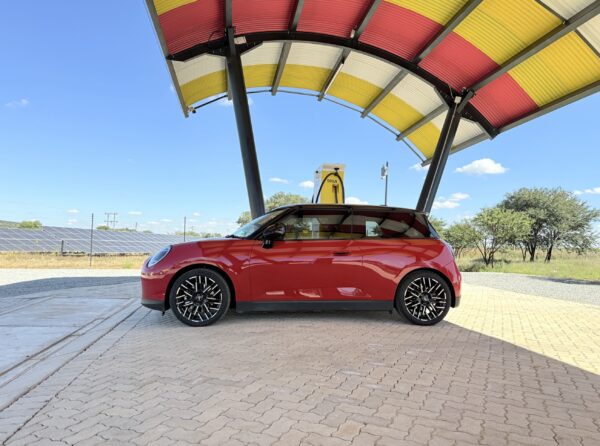
The Charge (formerly Zero Carbon Charge) solar charger opened two weeks into my long-term Mini Cooper SE test but admittedly, I was afraid to make the trip. When I drive efficiently, a full charge on the Cooper SE yields 300km of range and when I toggle to Efficient mode, 330kms.
The location of Charge, in what is meant to be South Africa’s first nationwide public solar off-grid chargers, is in the North West, off the N12, after Klerksdorp but closer to Wolmaransstad. For a Joburger like me, the location is in the middle of nowhere.
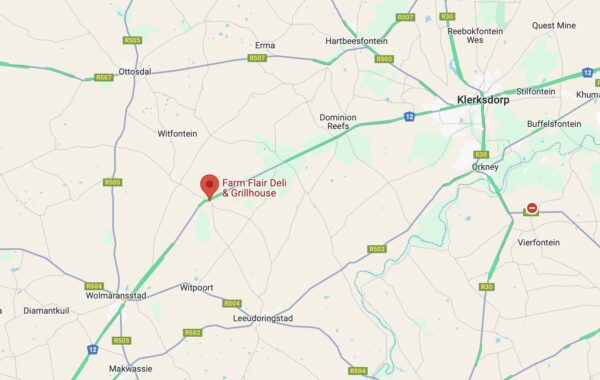
The naming convention is not ideal; I think it was poorly thought of, even Zero Carbon Charge would have sufficed. Try searching “Charge EV charger” on Google Maps, and you will not find it.
I had seen pictures from the launch with the name of the restaurant on-site, Farm Flair Deli & Grillhouse, so I saved it on Google Maps. This is what you should use to get there. The menu is a bit limited.

Between December and February, I felt 300km odd would have been cutting it fine to make the 247km trip, if I had to factor unforeseen circumstances. It was only after a conversation with Greg Cress from Accenture at the Cars Awards on 27 February, I decided to make the trip as he mentioned chargers in the nearby towns of Potchefstroom or Klerksdorp if I would run out before getting there.
Once Ramadan was over, I planned a trip for end April, which was last week. A friend and I made the journey together, leaving from Sunninghill, early on Monday, 28 April.
Preparation ahead of the trip
All I knew that I was going to charge the car to 100% ahead of the trip and not use the car on the weekend, and drive it straight on the Monday. I used my own car for errands, but on Friday, I had two meetings and planned to charge at the locations of the meetings.
As it happened, both spots had EV chargers however, I was asked for a lift and once I charged to 100% after the first meeting, it involved making several short trips of about 5km each. Bear in mind, this was a of starting and stopping/parking, which impacted my final range for Monday morning.

This has not happened to me before, where when I charged to 100%, and with Efficiency mode switched on, I had a mere 270km of range. I was mildly panicking, because it took me a while to decide to go based on over 300km of range, and now, my “poor” driving decisions from a few days prior impacted my range.
Nevertheless, we set out on Monday with 270km of range. I would eventually learn that having 270km at the start point didn’t really mean that much, but for most people, they wouldn’t know this at all.
Starting off from Johannesburg North
I left home with 270km of range, and adjusted the air conditioner shortly after, before heading onto the N1 and N12. I had not driven this route before, but the N12 goes all the way to the Charge charger. You pass Potchefstroom, and Klerksdorp along the way.
When I was on the N1 after Malibongwe, I was on 234km but the roads onwards was mostly flat, because by the time I got to Potchefstroom, I was on 250km of range.
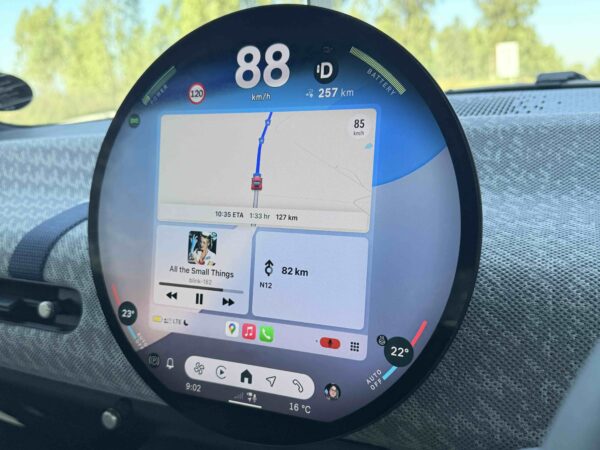
Basically, left Sunninghill with 270km, and passed through the town in Potchefstroom with 250km still left, which means I netted 20km of range in what was a 144km stretch.
I was surprised to learn this was even possible, but this was due to flat roads, and the regenerating of the battery. I drove exclusively on Efficient mode. It’s crazy to think you can take an EV from Jhb North to Potch and only use 20km of range. I wouldn’t believe it if I didn’t experience it.
So we passed Potch and eventually got to Klerksdorp but from this point onwards it was a lot of uphills and sadly lost my good streak of regeneration. I wanted to make it to our destination with 200km of range to spare but realised that wouldn’t be possible, so conceded with 170km of range.
When I was about 1km from the destination, my range dropped to 169km so obviously I crawled like a snail to generate a little more until I got there with 170km. The OCD in me revealed itself right there.
At the Charge solar charging station
I was happy with a range of 170km at Wolmaransstad, which was 42% of battery, after leaving with 270km and a 100% battery. We netted 100km of range for the 247km journey.
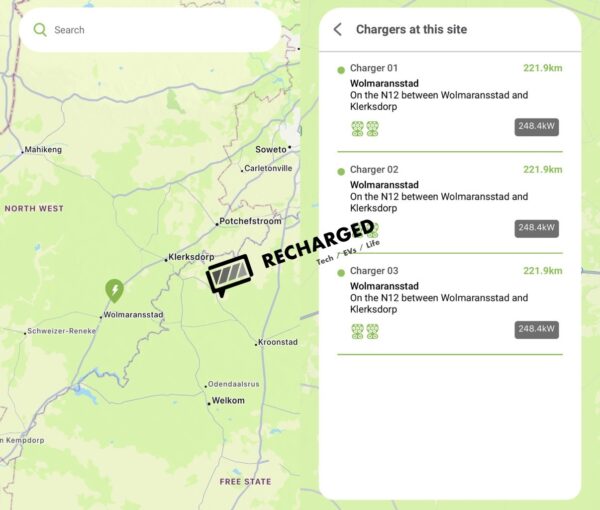
Charge is currently the fastest charger in South Africa at 248kW. You need to download the Charge app to use it. I found the app buggy at launch when I couldn’t even log in. It’s a very basic app.
I got to recharging the Mini after taking some photos and I gotta say, it’s the most un-user friendly set-up I’ve seen. It took me a while to get it to start the charge. There are QR code stickers all over the charger and eventually I scanned the correct one. I will blame myself for not realising each side has its own QR Code.

While the car was charging we took a look at the property with loads of solar and sheep grazing to one side, plus it has a play area for kids. Thanks to the Mini app I could monitor the charge from inside the restaurant.
When it was 97% done, we were ready to leave but the charger wouldn’t end the charge. We were stuck in a loop, it said to follow instructions from the card terminal. We couldn’t tap a card as it was app based, so after going back and forth for a while, we were forced to hit the emergency stop button.
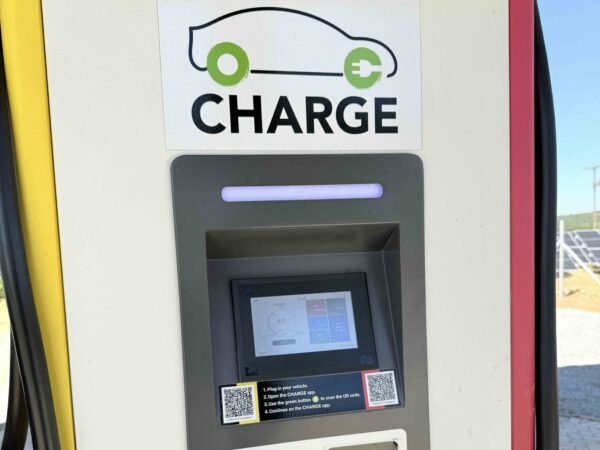
But by then, we exhausted all options, even called the support line, which went to another company that had nothing to do with the chargers (none of the options mentioned it) plus it was closed for the public holiday.
I felt the process to be a frustrating one. It shouldn’t be this difficult. Bear in mind, I’ve been using public, dealership and mall chargers for a good few years, and it’s been mostly seamless. This was anything but, factoring that we are in the middle of nowhere and there is no 24/7 support.

After the charge ended, fortunately, it was smooth sailing with ejecting the cable. I had no regrets visiting the station but I believe the process can be improved.
The Mini showed 410km of range for the journey back, based on the drive there and me switching to Efficient mode, which is basically my default. More on the costings below.
Stats and Costs from the trip
If you love data and stats like me, here’s a bonus from this journey. I got the data from the Mini app and Charge app, and I’m sharing the costing here. This is also why it’s so crucial for an EV to have an app.
This is how the Mini read the charge from the moment we plugged the charger in. It also picked up that it didn’t want to charge the vehicle. We charged the battery from 42% (162km) to 99% (397km).
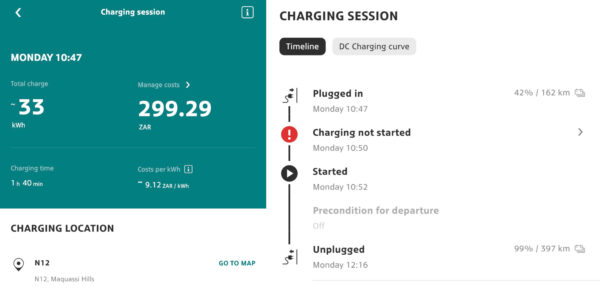
As you are all aware, to keep the battery in an optimal condition, it is best to charge it to 80%, and why you see the stats of 10-80% charge time shared for all EVs. It’s the quickest charge up until 80%. It took only 20 minutes to get the battery from 42% to 80%, thereafter it was trickling (while we ate).
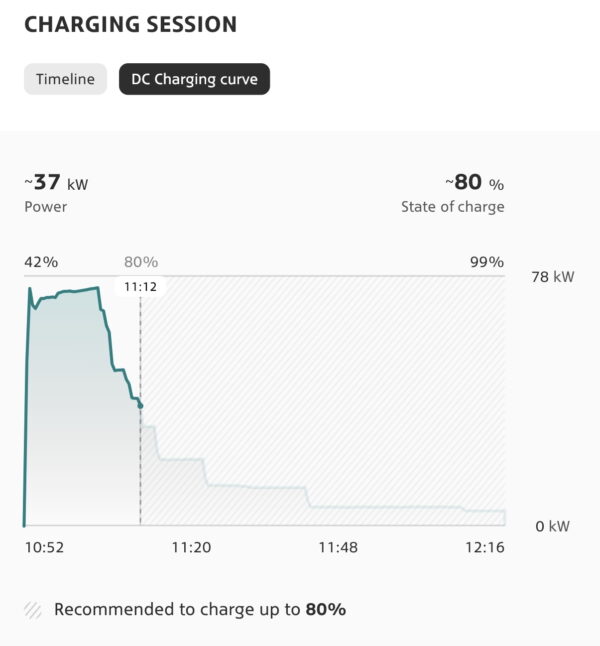
As you can tell, very efficient charger, does the job well except for initiating and ending the charge. But at what cost? This is the most expensive charger I’ve used, at R9.15 per kWh (R299.30 ÷ 32.71). I mean, to be fair, nobody makes a profit from an EV charger.
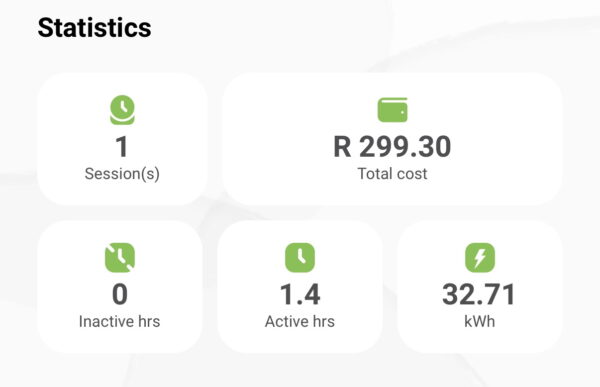
While Mini provides a Charge Card for a test car, this charger only works via the app and I had to link my bank card to pay. The card supplied works with GridCars and Rubicon chargers thus far, from my experience.
And lastly, the stats for the journey from Sunninghill to Wolmaransstad. When I left home, the GPS said it would take 3 hours, but because I was driving at an average of 80km/h, it added about 11 mins on.
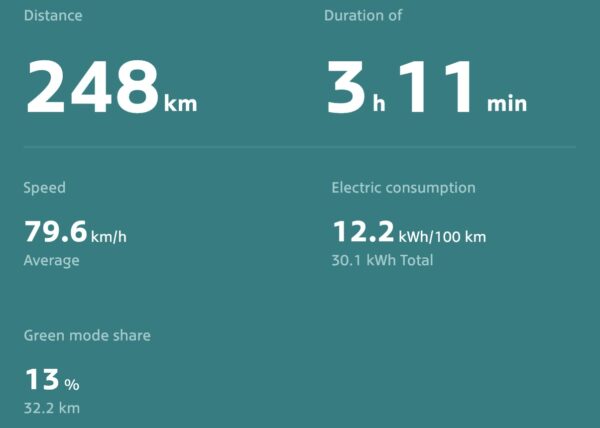
Mini says the 2024 Cooper SE’s claimed consumption rates are14.7-14.1kWh/100km, and I achieved 12.2kWh/100km. I think that’s excellent.
Final thoughts
I’m glad I did this trip and should not have hesitated to begin with. The drive was kinda boring, I’m not a road tripper so doing this as a day trip made the most sense for me, instead of overnighting in a small town.

It made me realise it doesn’t really matter what range your EV estimates (it’s an average from your previous driving patterns), so whether its 270km or 410km, if you have a flat road, you will make it, while keeping in mind what the WTLP figures are.
In this instance, the Mini Cooper SE is rated 330km for real world usage and 402km for WLTP low energy. I wouldn’t have known I would nett 20km of range to get from Sunninghill to Potchefstroom.
Could I have done this if I wasn’t on Efficient mode? Likely not. The results would also be different in cold weather on the battery, and that’s not even touching on using the heater.

The next time someone tells me that the Mini’s 330km of range is too little, this is my story to share. I know I could easily do a trip to Durban and stop mid-way to charge, but the question is, do I want to?
Nafisa Akabor
Related posts
ABOUT

Recharged is an independent site that focuses on technology, electric vehicles, and the digital life by Nafisa Akabor. Drawing from her 18-year tech journalism career, expect news, reviews, how-tos, comparisons, and practical uses of tech that are easy to digest. info@recharged.co.za





